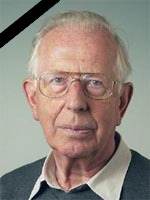
On October 31, 2017 Johannes (Hans) Lyklema (86 yo) passed away.
Hans obtained his PhD in Utrecht, The Netherlands, under the supervision of Prof. Overbeek, the “O” of the DLVO theory. After that Hans went to Los Angeles to work with Prof. Mysels and returned to the Netherlands in 1962 to become head of the department of Physical and Colloid Chemistry at Wageningen University. He brought this research group to great prosperity, gaining wide national and international recognition.
Apart from being a great scientist, he was also an inspiring teacher and a wonderful person. He had contacts with countless colleagues around the world, and was one of the founding fathers of the International Association of Colloid and Interface Scientists (IACIS), for which he was the Newsletter Editor for many years. His retirement in 1995 was by no means a farewell to science.
Until the end of his life he has worked on his impressive work, including the five-piece standard work ‘Fundamentals of Interface and Colloid Science’, and continued contributing to international conferences. He was an early advocate of sustainability to preserve the earth and prevent climate change.
His intellectual heritage represents his most durable monument, which will last as long as colloid science will exist.
The entire Colloid and Interfaces community mourns the loss of a great man and of an outstanding scientist.
Here is a short biographical profile that Hans himself wrote recently.
Johannes (Hans) Lyklema was born in Apeldoorn (NL) in 1930. From 1948 onwards he studied chemistry and physics at Utrecht University. This study lead to a PhD in 1956 under the supervision of prof. Overbeek.
In his thesis, a first attempt was made to measure surface charges on hydrophobic colloidal particles and correlate them to stability data. After his military service with the Dutch Air Force he returned to the Van’t Hoff lab. of Utrecht University where eventually he became lecturer, a position more or less comparable to that of an associate professor.
In 1961-62 he was affiliated to the University of Southern California in Los Angeles, where he joined forces with Karol Mysels in studying flow in thin fluid films.
From 1962 onwards he became full professor of physical chemistry and colloid science at the then Wageningen Agricultural University, presently called Wageningen University. He retained this position till his retirement in 1995 but remained active after that.
His stay at Wageningen University was interspersed with visiting professorships abroad, a.o. in Bristol University (UK), Canberra ANU. (AUS), Tokyo Science University (JP), Univ. of Florida at Gainesville and/or stints abroad for teaching courses (a.o. in France and Finland). Hans is married to Wil van Benthem; they have two children and three granddaughters.
Hans Lyklema’s research covered a large part of the field of interface and colloid science with a certain emphasis on charged systems. He was particularly interested in understanding and application of basic colloidal concepts. His themes included electric double layers, electrokinetics, dielectric spectroscopy, polymer and polyelectrolyte adsorption, proteins at interfaces, Langmuir monolayers and interfacial rheology. Needless to say that in the fields of agriculture many productive collaborations grew, for example in the domains of food emulsions, bacterial adhesion, plant viruses, soil structure and soil contamination. More recently his interest is moving toward understanding and solving recent environmental problems.
He has published several hundreds of papers in the peer-reviewed literature, earning him a H-index of about 70. Most characteristics are his five textbooks “Fundamentals of Interfacial and Colloid Science” (1991-2005 by Academic Press and Elsevier). These books aim at explaining interfacial science to people who do not have the required background.
Typically, volume I (Fundamentals) contains introductory courses in thermodynamics, statistical thermodynamics, interaction forces, electricity, fluid dynamics and optics, all with their applications to interface and colloid science. Volumes II and III deal with solid-fluid and fluid-fluid interfaces, respectively: volume II treats electric double layers, electrokinetics and polymer adsorption whereas volume III covers the measurement and interpretation of interfacial tensions, Langmuir and Gibbs monolayers and wetting. Volumes IV and V handle colloidal systems, with vol. IV covering colloid stability phenomena, including structural studies and rheology, and vol. V focusing on soft matter (steric stabilization, association colloids, microemulsions, foams, and emulsions). Needless to say that he received substantial help from co-workers who assisted him in writing (parts of) chapters and/or critically screening his texts. Beyond his regular university teaching, Hans has given up to almost a thousand lectures in five continents and five languages.
For his scientific and educational work Hans has received several distinctions, including three honorary doctorates; one on agronomy from Louvain-la-Neuve, one on the technical sciences from Stockholm and one on applied physics from Granada.
He was knighted by the Dutch Queen.
